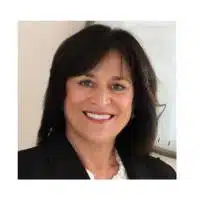by Alesia Dutton
The majority of Americans over the age of 50 prefer to remain in their homes as they age, according to a 2021 survey conducted by AARP. As a Reverse Mortgage Specialist with ten years of experience, I work with a lot of retirees who would like to age in place but worry about the expense of necessary home modifications. If you are someone who would like to stay in your home safely for as long as possible, you might want to consider a reverse mortgage to fund the renovations.
I know reverse mortgages had a bad reputation in years past. As a result, many are not aware that these programs changed a great deal since then and don’t realize the many benefits of this type of program today. I hope the following information helps separate fact from fiction for you.
What is a Reverse Mortgage?
What is a reverse mortgage? Good question. Let’s start at the beginning. A reverse mortgage, also known as a Home Equity Conversion Mortgage (HECM), is a Federal Housing Administration (FHA) Government Insured loan designed for people ages 62 and older. It allows you to borrow a percentage of the value of your home, based on your age and the current interest rate. As the homeowner, your name is on the title, just like with any loan. The big difference is that with a reverse mortgage, you pay no monthly mortgage payment. Nothing is due until your home is sold or the last borrower moves out of the home or dies. At that time the estate/heirs have 90 days to refinance the loan to keep the home. Alternatively, they have up to one year to sell the house. The loan balance is then paid off and any remaining money goes to the estate/heirs.
Why Do Reverse Mortgages Get a Bad Rap?
Reverse mortgages sometimes get a bad rap due to misunderstandings, such as the idea that the lender receives the title to the home. Other times, simple miscommunication among family members about future inheritances are to blame.
However, other reasons for the bad reputation relate to real problems that are no longer issues with the new HUD regulations. For example, there were potential problems related to withdrawing too much too soon or issues confronting non-borrowing spouses. Additionally, we used to see foreclosures for desperate borrowers who could not keep up with their property taxes, homeowners’ insurance, and home maintenance requirements.

Changes Made to Improve Reverse Mortgages
Between 2010 and today, there were several changes made to improve the HECM product. These changes include:
- 2013: HUD released new HECM policies to make the reverse mortgage product safer and stronger.
- 2014: HUD started to finalize the guidelines for the financial assessment.
- 2015: non-borrowing spouse protections and a formal, more detailed financial assessment were put in place.
Counseling is now required.
In the past, retirees sometimes opened reverse mortgages to immediately spend the full amount of available credit. Some of these bad actors used the money to overindulge irresponsibly in unnecessary discretionary expenses or finance shady or sometimes fraudulent investments or insurance products. This behavior jeopardized the role of home equity as a reserve asset for the household. HUD now requires a counseling session and enacted new rules to discourage taking too much too soon from the available line of credit. Also, more than 60% of the available credit can be spent in the first year only for particular qualified expenses such as to pay off an existing mortgage.
A financial assessment is now required.
Previously, reverse mortgages were used only by those unable to keep up with their property taxes, homeowner’s insurance premiums, and home upkeep. Often this behavior resulted in a default that triggered foreclosure. As of 2015, HUD requires the borrower to undergo a financial assessment to ensure they can make these payments. If other resources are not available, the new rules require that a designated pool of money called a set-aside, is budgeted upfront for expenses down the road. These set-asides do not become part of the loan balance until they are spent, but they do otherwise limit the amount you can borrow from the line of credit.
There are new protections for non-borrowing spouses.
Younger spouses used to be taken off the home title to allow a reverse mortgage to proceed. Upon the death of the borrower, it then came as a surprise to the non-borrowing spouse that they faced either repaying the loan balance or leaving the home. New protections, put in place in 2015, are now in place for these non-borrowing spouses. They can remain on the home title and stay in the home after the borrowing spouse has passed away, though they cannot borrow more from the line of credit. Lending limits based on their age help protect the insurance fund. Eligible non-borrowing spouses no longer have to worry about loan repayment until they have otherwise left the home. Please note that not all states allow non-borrowing spouses, so check with your mortgage professional if allowed in your state.

Myths vs. Facts About Reverse Mortgages
It’s essential to separate fact from fiction. Here are the two biggest misconceptions about reverse mortgages.
Myth #1: The bank or government owns your home if you do a reverse mortgage.
This is not true and never was. The homeowner stays on the title.
Myth #2: The homeowner gets approved for 80-100% of the appraised value of the home.
Again, not true. At this time, homeowners are approved for 40-70% of the appraised value of the home. The approved amount is based on the youngest homeowner and the current rate.
Real-Life Success Stories
I helped many retirees with reverse mortgages, all with different situations, in the last ten years. One of my favorite stories is about a couple that had a small mortgage and a decent income. As the wife had mobility issues with muscular degeneration, they had long-term care concerns. They wanted to reduce their monthly expenses and have some extra money so they could travel to see their grandbabies more often. Currently, their only option for travel was to take money from their investments. I set them up with a reverse mortgage to eliminate the mortgage payment, which gave them extra money to travel without having to dip into their funds. This program also gave them access to some equity, which they left in their growing line of credit. They now had additional monies set aside for future long-term care needs which provided them with great peace of mind.
Another great example was an 81-year-old widow who came to me for help with a reverse mortgage. She still worked but dreamed of retirement and travel, without giving up her big, beautiful home. We were able to pay off her mortgage, which eliminated that large monthly payment. Now she had the money to retire. I also set her up with a monthly payment to use specifically for travel expenses.
I had another situation where the adult children in a family called me to help them grant their mother’s wish to remain in her home until she passed away. The in-home healthcare was up to $10,000 a month and they were running out of mom’s money. As Mom owned the home free and clear, we were able to tap into about half of the home value, which took care of the healthcare costs until her final day. So many of my clients worry about inflation and healthcare costs and are not aware that a reverse mortgage can provide an excellent solution.
My final story concerns the very prevalent Alzheimer’s disease. I worked with a wonderful man that needed to move his wife into memory care. He tried taking care of her at home for a while as he didn’t think he could afford to move her into a community. Unfortunately, the time came when he could no longer manage it. He thought his only option was to sell the house and move in with his kids. However, as he owned his home free and clear, I was able to help him utilize his home equity to cover the costs with a reverse mortgage. He was able to remain in the family home independently and still afford to give his wife the proper accommodations and care she needed.
Final Advice about Reverse Mortgages
Reverse mortgages provide older adults with a way to access their home equity to pay for home modifications to age in place. However, they may come with downsides, including the potential for the loan balance to increase over time due to accruing interest and fees and the requirement to continue paying property taxes, insurance, and maintenance. Borrowers must undergo counseling to understand the complexities and potential risks associated with these loans. In addition, borrowers should only consider a reverse mortgage with the help of an experienced reverse mortgage professional who can recommend the correct program to meet your specific needs.
The best advice I can give about reverse mortgages is to NOT request an online quote. The second you push “send”, your phone number and email address is sold to many companies. Your phone will immediately begin to ring! I suggest asking your bank or financial advisor if they can recommend a reverse mortgage specialist. Once you contact the referral, ask them if they “personally” do other types of loans as well. If they do, then they are not a reverse mortgage SPECIALIST. This program is very unique and requires an experienced loan officer. It’s also a good idea to inquire about how many reverse mortgages they close in a month. If they are not closing at least one reverse loan monthly, then they are not experienced.

FAQs About Using Reverse Mortgages to Age in Place
Below are answers to some commonly asked questions we hear from our 50Plus readers about reverse mortgages.
Who is eligible for a reverse mortgage to age in place?
To be eligible for a reverse mortgage, you generally need to be at least 62 years old and have significant equity in your home. The home should also be your primary residence.
How does a reverse mortgage work?
A reverse mortgage is a financial arrangement that enables homeowners aged 62 and older, to convert a portion of their home’s equity into tax-free cash without having to sell their property. Instead of making monthly mortgage payments, as with a traditional mortgage, a reverse mortgage allows the homeowner to receive payments from the lender. The loan balance, including accrued interest and fees, becomes due when the homeowner moves out of the home, sells the property, or passes away. Generally, the home is sold to repay the loan, and any remaining equity goes to the homeowner or their heirs.
How can I receive funds from a reverse mortgage to support aging at home?
You can receive funds from a reverse mortgage in various ways: as a lump sum, a line of credit, monthly installments, or a combination of these options. The choice depends on your financial needs and the specific reverse mortgage product you select.
Do I have to repay the reverse mortgage if I use it to age in place?
While living in the home, you typically don’t need to make payments on the reverse mortgage. The loan becomes due when you move out of the home, sell it, or pass away. At that point, the loan balance, including interest and fees, must be repaid.
Can I continue living in my home after obtaining a reverse mortgage?
Yes, the primary purpose of a reverse mortgage is to enable seniors to stay in their homes while accessing their home equity. You retain ownership and can continue to live in the home as long as you meet the loan terms, such as maintaining the property and paying property taxes and insurance.
What happens to my heirs and my home if I use a reverse mortgage to age in place?
When the last borrower passes away or moves out of the home permanently, the reverse mortgage becomes due. Your heirs can choose to repay the loan and keep the home or sell the home to repay the loan. If the loan balance exceeds the home’s value, the heirs are not responsible for the excess.
What are the costs associated with obtaining a reverse mortgage?
Reverse mortgages come with fees, including closing costs, origination fees, mortgage insurance premiums, and interest charges. It’s important to carefully review the terms and costs associated with the loan.
What are the risks of using a reverse mortgage for aging in place?
Some risks include the potential for the loan balance to grow over time due to accruing interest and fees, reducing the equity available to heirs. Additionally, failing to meet loan obligations, such as maintaining the property and paying taxes, could lead to repayment demands.
Are there alternatives to using a reverse mortgage for aging in place?
Yes, alternatives could include downsizing to a more manageable home, utilizing home equity lines of credit, exploring government assistance programs, or considering other financial strategies.
Remember that reverse mortgage regulations and options can change, so it’s crucial to consult up-to-date sources or financial professionals for the most current and accurate information.
About the Author: Alesia Dutton
 Alesia Dutton started in the Reverse Mortgage Industry in 2013, at which time she was hired to do Reverse and Reverse only. Her position was unique because at that time most lenders did regular loans with reverse loans on the side. Her company felt their lenders needed to focus on just the baby boomer clients. To this day, Alesia continues to focus only on this market at Mutual of Omaha Reverse Mortgage and prides herself on personally walking all homeowners through the reverse mortgage process and getting to know them as individuals. Their needs and timeline are always the priority.
Alesia Dutton started in the Reverse Mortgage Industry in 2013, at which time she was hired to do Reverse and Reverse only. Her position was unique because at that time most lenders did regular loans with reverse loans on the side. Her company felt their lenders needed to focus on just the baby boomer clients. To this day, Alesia continues to focus only on this market at Mutual of Omaha Reverse Mortgage and prides herself on personally walking all homeowners through the reverse mortgage process and getting to know them as individuals. Their needs and timeline are always the priority.
Alesia was on the Board of NAIFA (National Association of Insurance and Financial Advisors) in New Mexico and Dallas. This position allowed her access to up-to-date information on government changes that affect retirement and asset growth. She currently works with the El Paso Estate Planning Council, NM Estate Planning Council, and NM Mortgage Lenders Association. She dedicated her entire career to educating bankers, loan officers, financial advisors, and realtors about this program.
Over the years, Alesia and her husband lived in California, New Mexico, and Texas. They spend much of their free time with their two grandsons in Little Elm, TX. When Alesia is not working, they love to travel! Their favorite times are spent outdoors and with family. Learn more about Alesia on her website. For any questions about reverse mortgages, feel free to contact her via phone (972-922-2699) or email.










